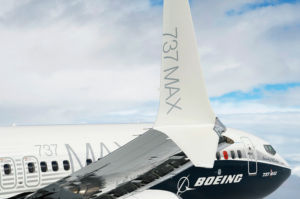Leeham News and Analysis
There's more to real news than a news release.
How much of International passenger flights can be paid by belly cargo? Part 2.
By Bjorn Fehrm
Subscription Required
Introduction
June 11, 2020, © Leeham News: As international passenger traffic slowly recovers, how much of the cost of flying passengers on the international routes can be paid by the freight under the floor?
We discussed the base parameters to answer this question in last week’s article. Now we calculate the revenues from passengers traffic and Cargo and compare them with the operational costs.
Summary:
- The high freight prices make it possible to resume international passenger flights without losses on routes where there is substantial freight demand.
- As belly freight capacity comes back to the market the freight prices will decline, but by then the passenger load factors should be on the way up.
France to invest 15 billion Euro in its aeronautical industry
By Bjorn Fehrm
June 10, 2020, ©. Leeham News: France presented a 15 billion Euro support plan for the French aeronautical industry yesterday, to help the industry overcome the effects of the COVID-19 pandemic.
The plan has three focus areas:
- safeguard the employment of the 300,000 employed in the French aero industry
- transform the supplier network to a more robust structure
- and perhaps most interesting, set the direction for the industries’ next aircraft projects
How much of International passenger flights can be paid by belly cargo ?
By Bjorn Fehrm
Subscription Required
Introduction
June 4, 2020, © Leeham News: Air cargo prices are at an all-time high. The air cargo demand is down 28% compared with the same time last year, but the capacity has disappeared faster. Half of the world’s cargo was flying in the bellies of passenger aircraft, and as these were grounded, 50% of the world-wide cargo capacity went missing.
Airlines have taken the seats out of passenger jets and now fly them as belly freighters with light pandemic protective gear cargo in the cabins on special authorization from the authorities. This has alleviated the capacity crunch somewhat but demand and capacity still don’t match. As a result, cargo prices stay high.
As international passenger traffic slowly recovers, how much of the cost of flying passengers on the international routes can be paid by high priced freight in the bellies of the aircraft?
Summary:
- While domestic passenger traffic shows the first signs of recovery, international traffic will take long to recover.
- At the same time, cargo prices are two to three times higher than normal for international routes within Asia and between Asia and the US or Europe.
- How much of the bills for flying international passenger traffic in the recovery period can be paid by cargo in the bellies of these jets?
Pontifications: Assessing the impact of COVID-19: today’s take
April 6, 2020, © Leeham News: It’s going to be quite a while before there is a clear understanding how coronavirus will change commercial aviation.
LNA already touched on impacts to Airbus, Boeing and Embraer. None of it is good. For Boeing, burdened with the additional stress of the 737 MAX, is in the worst position. Even when the MAX is recertified, there won’t be many—or any—customers in a position to take delivery of the airplane.
Bearing in mind that what’s true today will change in a day, or even an hour, let’s take a rundown of where things seem to stand now.
Coronavirus dominates sideline talk at aviation conference
By Scott Hamilton
March 2, 2020, © Leeham News, Austin (TX): The global impact of COVID-19, the coronavirus, was the dominant talk on the sidelines of an aviation conference here.

Source: KRDO.com
Industry professionals predict the reduction in airline service will only grow and could grow dramatically. Aircraft groundings could escalate sharply. Carriers are already seeking payment relief. Lessors are gearing up to repossess airplanes.
And universally, these professionals think the worst is yet to come.
Asian airline troubles could affect up to 20% of Airbus, Boeing backlogs
By Judson Rollins
Subscription Required
In last week’s analysis, LNA examined which airlines in greater China and the rest of Asia may be in imminent risk of financial distress due to the growing coronavirus outbreak. We found that airlines from Malaysia to Japan have significant exposure to the Chinese market. Several have shaky balance sheets and were already losing money prior to the outbreak, most notably AirAsia, AirAsiaX, Thai Airways, Nok Air, Malaysia Airlines, and Asiana.
The coronavirus outbreak has now spread to Europe and the Middle East, but we are continuing our focus on Asia as it’s been most greatly affected so far. Additional analysis focusing on Europe will follow, with particular attention to the potential for further airline consolidation on the continent.
LNA reviewed ownership and operating data on aircraft to understand top manufacturer and lessor exposure to greater China, which includes Hong Kong and Macau, and the rest of East Asia.
Summary
- Airbus has greater exposure to China and the rest of East Asia, especially in widebodies;
- Boeing’s 787, 777X difficulties will be exacerbated by Asian airline troubles;
- COMAC’s sales book is almost exclusively in China, but government support is likely;
- ATR has material exposure to Southeast Asia; other regional aircraft OEMs are largely unaffected.
The Impact of Asian airline difficulties on OEMs
Subscription Required
By Vincent Valery
Introduction
Feb. 24, 2020, © Leeham News: Passenger traffic in the Asia-Pacific region has grown dramatically since the turn of the century. Except for temporary dips caused by SARS in 2003 and the global financial crisis in 2008-09, passenger growth has stayed comfortably above 5% each year.
China emerged as the second-largest commercial aviation market behind the US. Domestic traffic in mainland China grew fivefold, and international traffic doubled since 2003. Numerous low-cost carriers become powerhouses during that period.
Along with this growth came major aircraft orders. Five out of the 10 largest A320neo family orders are from airlines in the Asia-Pacific region.
However, airline profitability in the region recently lagged that of those in the US and Europe. Even before the COVID-19 (coronavirus) outbreak, numerous carriers had financial difficulties. The outbreak will accelerate the reckoning for some airlines.
According to an IATA report, the COVID-19 outbreak could translate into a $29.3bn revenue loss for airlines in 2019. Instead of a predicted 4.8% YoY passenger traffic growth for the Asia-Pacific region in 2020, traffic could contract by 8.2%.
In the first of a two-part analysis, LNA assesses the vulnerability of various airlines and the resulting potential impact on OEMs.
Summary
- Numerous airlines have significant capacity exposure to China;
- Several Asian airlines already had fragile balance sheets;
- Chinese airlines are under particularly acute cash pressure;
- Airbus and Boeing have material production exposure to affected airlines.
Returning the MAX to service
Subscription Required
Introduction
 April 1, 2019, © Leeham News: Returning the Boeing 737 MAX to services following its grounding should reasonably be a straight-forward affair, if past groundings were examples.
April 1, 2019, © Leeham News: Returning the Boeing 737 MAX to services following its grounding should reasonably be a straight-forward affair, if past groundings were examples.
But, to mix a metaphor, there are plenty of unchartered waters with this grounding that stand ready to complicate matters.
Bloomberg reported Saturday that Europe’s FAA equivalent, EASA, skipped last week’s Boeing meeting of 200 pilots and regulators.
Summary:
- US FAA is no longer the leader or gold standard.
- EASA, Transport Canada want their own reviews.
- China, the first to ground the MAX, also suspended plane-by-plane certification.
UK bans MAX; China checked with Boeing, FAA before grounding
March 12, 2019, © Leeham News: Australia and the United Kingdom today joined a growing list of countries banning the Boeing 737 MAX from operating in or through their  airspace.
airspace.
The UK’s decision to ban the MAX is, up to now, the most important development in the growing crisis of confidence in the safety of the MAX.
The UK and continental Europe’s regulators, EASA, are considered tough regulators who usually work in concert with the USA’s Federal Aviation Administration. That the UK authority is now ahead of the FAA is crucial. If EASA follows suit, the blow to the FAA and to Boeing will be huge.





